Saving up for a down payment can seem like an impossible task. The good news is that first-time homebuyers in Canada can withdraw funds tax-free from their registered retirement savings plan (RRSP) to contribute to a down payment.
The program is called the RRSP Home Buyers' Plan, and in order to be eligible, there are a few requirements you'll need to meet.
- First, you cannot have owned a home in the last four years. This four-year period is the four years prior to purchasing a home, beginning on January 1 of the fourth year before the taxpayer withdraws RRSP funds.
- If you've used the Home Buyers' Plan in the past, you cannot have an outstanding balance.
- Next, you must sign an agreement to buy the home and intend to use the home as your principal residence. Generally, the Canada Revenue Agency (CRA) presumes that taxpayers who did not occupy their home for the first year do not qualify for the Home Buyer's Plan. The CRA's default position can indeed be disputed by taxpayers who can prove their intention to occupy the house.
- You must make the withdrawal within 30 days of taking the title of the home.
- The money must be in the RRSP account for a minimum of 90 days prior to withdrawal.
- The home must be bought or built by October 1st of the year following the withdrawal.
- And finally, you must reside in Canada at the time of withdrawal and remain a Canadian resident until the home is purchased or built.
If you satisfy all the requirements, you can withdraw up to $35,000 towards your down payment. If you're buying a home with your spouse or common-law partner, and you both meet the requirements, you can each withdraw up to $35,000 towards a down payment, for a total of $70,000. If you're buying a home with your spouse or common-law partner, but only one of you meets the requirements, that eligible partner can still withdraw up to $35,000 from their RRSP.
Think of this one-time tax-free withdrawal as a loan from your RRSP to yourself. The CRA requires that the loan is repaid within a 15-year period.
Let's Take a Look at How the RRSP Home Buyers' Plan Works
The government requires that you, as a taxpayer, make the first repayment 2 years following your home purchase. I.e., If you purchase a home in 2022 and withdraw $19,500 from your RRSP account. That means that in the year 2024, you are required to make your first payment.
Let’s Figure Out How Much That Payment Is
By dividing the withdrawal amount, which is $19,500, by 15 years, we can determine the minimum payment. Accordingly, the minimum payment is $1,300 per year and must be paid every year. It is important to note that the funds can be paid back at any time within those 15 years and do not need to be repaid all at once. The CRA will provide you with an annual statement concerning your Home Buyer's Plan, so there is no need to come up with these calculations yourself. This statement will indicate the minimum amount which must be repaid in the next tax year.
Now, you might be wondering what happens if you fail to pay the minimum amount each year? Well, the answer is that you must then pay tax on the amount, which is the difference between the amount repaid that year and the minimum repayment amount required. Taxpayers who pass away, turn 71 or become non-residents of Canada for tax purposes while they have an outstanding balance under the Home Buyer's Plan are subject to special repayment rules.
To illustrate this, let's go back to our original example. The minimum payment was $1,300. So, in a year, you only make a payment of $1,000. The difference is $300, and that $300 must be claimed as taxable income on your annual return.
Let's Take a Look at What Happens When You Make a Payment Larger Than the Minimum
In 2022, you purchased a home and withdrew $19,500 from your RRSP. In the year 2024, you made your first minimum payment of $1,300. In the year 2025, you make a large payment of $8,075. That means from 2026, you need to calculate a new minimum. You can take the original withdrawal amount and subtracting the total paid so far. That will bring you to $10,125. Now divide that new balance by the 13 years remaining to bring you to a new minimum payment of $778.85.
Who Can Participate in the Home Buyer's Plan More Than Once?
There are three different conditions under which a taxpayer may qualify to use the Home Buyer's Plan more than once.
- If a taxpayer wants to participate in the Home Buyer's Plan again, the previous withdrawal must be entirely paid off. Plus, funds must be in one's RRSP for at least 90 days before it can be withdrawn for use in the Home Buyer's Plan.
- Following a divorce or dissolution of a common-law partnership, a taxpayer may requalify for the Home Buyer's Plan. If you require more information on the "breakdown of a marriage or common-law partnership" scenarios that will allow you to requalify for the Home Buyer's Plan, our experienced accountants at Tax Partners can provide you with advice.
- Those who assist a related person with a disability may participate in the Home Buyer's Plan, regardless of whether it is their first time buying a home or not. Related person includes spouses, common-law partners, and children (adopted and biological).
More information about Tax Partners, please visit our YouTube channel or contact us at 905-836-8755. Alternatively, you may email us at [email protected].
The content of this blog/article is intended to provide a general guide to the subject matter. Specialist advice should be sought about your specific circumstances. Our firm does offer a FREE initial consultation (30 minutes).


